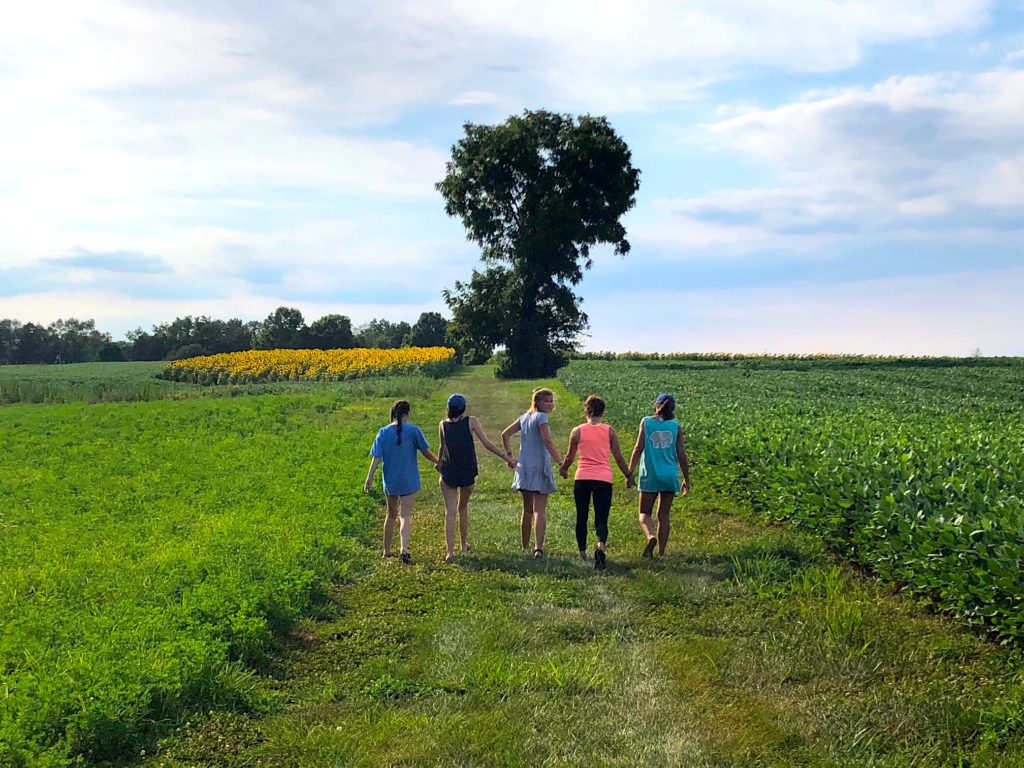
Research has shown that walking can both decrease our anxiety and increase innovation. Fortunately, this does not require running marathons or doing Iron Man events.
Regular participation in aerobic exercise has been shown to decrease overall levels of tension, elevate and stabilize mood, and improve sleep. Psychologists studying how exercise relieves anxiety and depression suggest that a 10-minute walk may be just as good as a 45-minute workout. One study in Japan found that taking a walk in the woods as opposed to the city delivered a 12 percent decrease in cortisol levels and a 7 percent decrease in sympathetic (fight-or-flight) nerve activity. One 2016 study demonstrated that exercise boosted the level of a neurotransmitter called GABA which acts to calm down our brains. Higher levels of GABA also allows our brain to block out unwanted thoughts and to stop us from ruminating.
I’ve written previously about how much I love the slow pace of a week of my summer camps for girls. I believe much of the calming effect of camp is due to how much walking we do compared to our regular lives. We walk to the mess hall for all of our meals, we stroll down to the lake for afternoon activities, and we hike down the trail to evening campfires. Since no phones or other technologies are allowed at camp, we actually have fun, deep conversations during these times as well.
Walking also has the benefit of increasing our creativity. Researchers at Stanford University found that walking indoors or outdoors similarly boosted creative inspiration. This creative thinking improved while the person was walking and shortly thereafter. Walkers perform better on tests that measure creative divergent thinking which is how we generate original ideas by exploring many possible solutions. If this research doesn’t convince you of this benefit of walking, maybe the example of some of our most ingenious minds will.
Nietzsche wrote that many of his best ideas came to him on long walks. Hemingway would take long walks whenever he felt stuck in his writing or to clarify his thinking. Charles Darwin built several walks each day into his schedule, and Charles Dickens often walked as much as 20 miles per day. In his book When, Daniel Pink cites research demonstrating that hourly five minute walking breaks boosted energy levels, sharpened focus, and improved mood throughout the day and reduced fatigue in late afternoons. He also shows studies that suggest three ingredients for the most effective breaks: move, no electronics, and go outside. Short walks have also been shown to be more effective than a single 30-minute walking break.
Decreasing stress and anxiety and boosting creativity and innovation are just a few of the gains from walking. The amazing thing about all of this information is that it doesn’t require a Herculean effort in order to gain benefits. You don’t need to shell out big bucks to join a fancy gym or buy hundreds of dollars of apparel. Just get off your butt and walk around for short bursts throughout your day and reap the benefits of an old fashioned walk.
For more on this subject, check out this post from a partner at the healthy lifestyle blog called GroomandStyle.com at https://groomandstyle.com/no-gym-workout-methods-get-in-shape/
And another post here from Tripoutside.com https://www.tripoutside.com/health-benefits-of-getting-outdoors/

JORDAN’S NEW BOOK, Letters From My Grandfather: Timeless Wisdom For a Life Worth Living is available in both print or e-book formats. Kindle versionPrint version